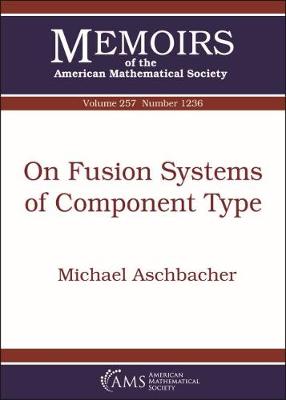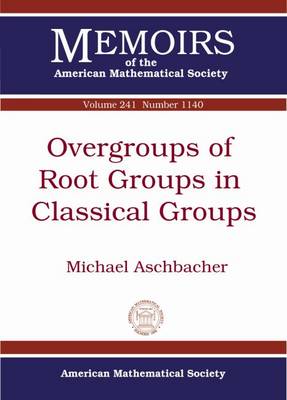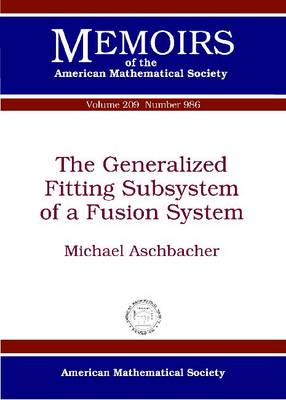Memoirs of the American Mathematical Society
3 total works
This memoir begins a program to classify a large subclass of the class of simple saturated 2-fusion systems of component type. Such a classification would be of great interest in its own right, but in addition it should lead to a significant simplification of the proof of the theorem classifying the finite simple groups.
Why should such a simplification be possible? Part of the answer lies in the fact that there are advantages to be gained by working with fusion systems rather than groups. In particular one can hope to avoid a proof of the B-Conjecture, a important but difficult result in finite group theory, established only with great effort.
Why should such a simplification be possible? Part of the answer lies in the fact that there are advantages to be gained by working with fusion systems rather than groups. In particular one can hope to avoid a proof of the B-Conjecture, a important but difficult result in finite group theory, established only with great effort.
The author extends results of McLaughlin and Kantor on overgroups of long root subgroups and long root elements in finite classical groups. In particular he determines the maximal subgroups of this form. He also determines the maximal overgroups of short root subgroups in finite classical groups and the maximal overgroups in finite orthogonal groups of c-root subgroups.
The Generalized Fitting Subsystem of a Fusion System
by Michael Aschbacher
Published 20 December 2011
The notion of a fusion system was first defined and explored by Puig, in the context of modular representation theory. Later, Broto, Levi, and Oliver extended the theory and used it as a tool in homotopy theory. The author seeks to build a local theory of fusion systems, analogous to the local theory of finite groups, involving normal subsystems and factor systems. Among other results, he defines the notion of a simple system, the generalized Fitting subsystem of a fusion system, and prove the L-balance theorem of Gorenstein and Walter for fusion systems. He defines a notion of composition series and composition factors and proves a Jordon-Hoelder theorem for fusion systems.|The notion of a fusion system was first defined and explored by Puig, in the context of modular representation theory. Later, Broto, Levi, and Oliver extended the theory and used it as a tool in homotopy theory. The author seeks to build a local theory of fusion systems, analogous to the local theory of finite groups, involving normal subsystems and factor systems. Among other results, he defines the notion of a simple system, the generalized Fitting subsystem of a fusion system, and prove the L-balance theorem of Gorenstein and Walter for fusion systems. He defines a notion of composition series and composition factors and proves a Jordon-Hoelder theorem for fusion systems.


